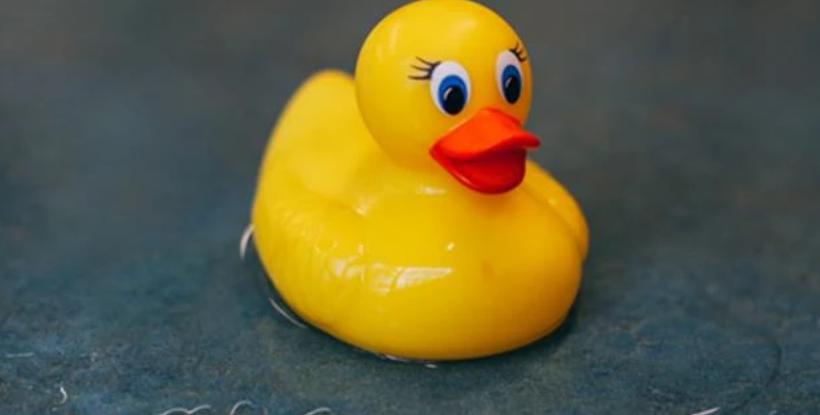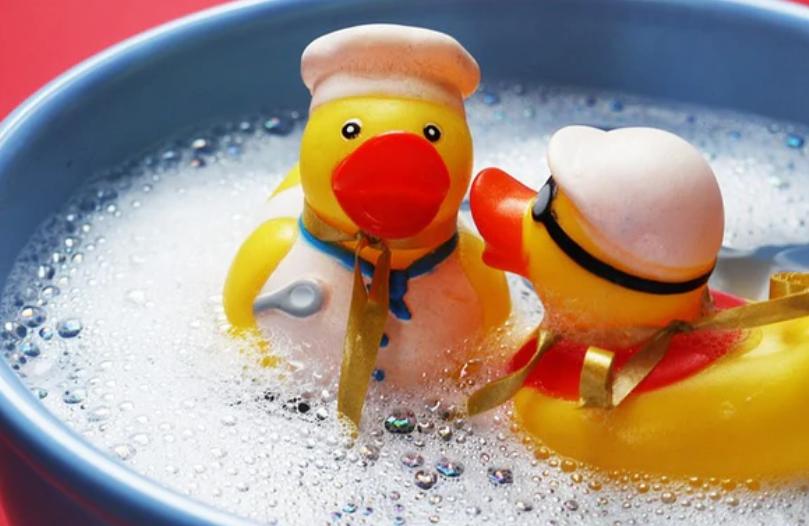How to Sanitize Bath Toys: Quick and Easy Methods
Bath toys are a staple in every household with young children, but they can quickly become a breeding ground for bacteria, mold, and mildew if not properly sanitized. While cleaning removes dirt and grime, sanitizing is crucial to eliminate harmful germs and ensure the toys are safe for your child. This guide focuses on effective methods for how to sanitize bath toys. We’ll walk you through a step-by-step process to thoroughly sanitize bath toys, using safe and simple methods that you can easily incorporate into your routine. By following these steps, you can maintain a clean and safe environment for your child’s bath time.

Why Is It Important to Sanitize Bath Toys Regularly?
Sanitizing bath toys is essential because it goes beyond mere cleaning to eliminate bacteria, mold, and other pathogens that can accumulate over time. While cleaning removes visible dirt, sanitizing kills the germs that can pose health risks to your child, especially if they put the toys in their mouth. Regular sanitization prevents the buildup of harmful microorganisms, ensuring that the toys are truly safe for play. It also helps to avoid mold growth, which can occur in toys that trap water. By regularly sanitizing bath toys, you protect your child from potential infections and maintain a healthier bath time environment.
Steps to Sanitize Bath Toys
Now that we understand why regular sanitization is important, let’s move on to the practical steps to ensure your child’s bath toys remain clean and germ-free.
Step 1: Prepare a Sanitizing Solution
To begin sanitizing your bath toys, start by preparing a safe and effective sanitizing solution. One of the most recommended solutions is a mixture of white vinegar and water, using equal parts of each. Vinegar is a natural disinfectant that is non-toxic and safe for children, yet effective in killing bacteria and mold. Alternatively, you can use a diluted bleach solution—mix one tablespoon of bleach with one gallon of water—but be sure to rinse thoroughly afterward. Both solutions work well to sanitize bath toys without leaving harmful residues. Having the right solution prepared is the first crucial step in ensuring the bath toys are thoroughly sanitized.
Step 2: Soak the Toys in the Sanitizing Solution
Once your sanitizing solution is ready, submerge the bath toys completely in the mixture. Ensure that all parts of the toys are covered by the solution, especially those with crevices or holes where water can be trapped. Let the toys soak for at least 10-15 minutes to allow the solution to work effectively. This soaking period is critical as it gives the sanitizing agent enough time to penetrate any buildup and kill the germs lurking within. For toys that trap water inside, make sure to squeeze them while submerged to allow the solution to reach the interior. This step ensures that all areas of the toys are properly sanitized.
Step 3: Rinse Thoroughly with Clean Water
After soaking the toys in the sanitizing solution, it’s essential to rinse them thoroughly with clean water. This step is crucial to remove any remaining sanitizing agent, especially if you’ve used a bleach solution, which could leave harmful residues if not properly rinsed. Hold each toy under running water, making sure to flush out any solution from inside the toys. Rinsing ensures that the toys are not only sanitized but also safe for your child to handle immediately after drying. Proper rinsing is a key part of the sanitization process, ensuring that no traces of the sanitizing solution are left behind.
Step 4: Dry the Toys Completely to Prevent Bacteria Regrowth
Drying the toys thoroughly after sanitization is just as important as the sanitizing process itself. Moisture left on or inside the toys can lead to the regrowth of bacteria and mold, undoing the sanitizing work you’ve just completed. Use a clean towel to dry the exterior of the toys, and for toys with holes, squeeze out any excess water. Place the toys in a well-ventilated area to air dry completely, or better yet, leave them in direct sunlight, which has natural antibacterial properties. Ensuring the toys are fully dry before storing them is essential to prevent bacteria and mold from returning.
Step 5: Store Sanitized Toys Properly
Proper storage of sanitized toys is the final step in maintaining their cleanliness and safety. After the toys are completely dry, store them in a way that allows air to circulate and prevents moisture buildup. Use a mesh bag or a container with drainage holes to keep the toys dry and ready for the next use. Avoid storing them in airtight containers where any remaining moisture could promote the growth of bacteria and mold. Regularly inspect stored toys to ensure they remain clean and dry. By following these storage practices, you can extend the effectiveness of the sanitization process and keep your child’s bath toys safe.
How Often Should You Sanitize Bath Toys?
The frequency of sanitizing bath toys depends on their usage. For toys that are used daily, it’s advisable to sanitize them at least once a week to keep germs at bay. If your child has been sick, sanitize the toys immediately afterward to prevent the spread of illness. Toys that are used less frequently can be sanitized bi-weekly. Regular inspections can help you determine when a toy needs to be sanitized—look for any signs of mold, discoloration, or a slimy feel, which indicates bacterial growth. By incorporating regular sanitization into your routine, you ensure that bath toys remain safe for your child to use and that any potential health risks are minimized.
Tips to Prevent Mold and Mildew in Bath Toys
Preventing mold and mildew from forming in bath toys starts with proper drying and storage. After each bath, squeeze out as much water as possible from the toys, especially those with holes. Ensure they are completely dry before storing them. A good storage method is using a mesh bag or a container with drainage holes, which allows air circulation and prevents moisture buildup. Additionally, you can seal the holes of rubber toys with a hot glue gun to prevent water from entering and causing mold growth. Regular sanitization, combined with proper drying and storage practices, will significantly reduce the risk of mold and mildew, ensuring that your child’s bath toys stay clean and safe for use.

Conclusion
Sanitizing bath toys is a vital practice to ensure the health and safety of your child during bath time. By understanding how to sanitize bath toys properly—preparing a sanitizing solution, soaking the toys, rinsing thoroughly, drying completely, and storing them properly—you can effectively eliminate harmful germs and prevent the growth of mold and mildew. Regular sanitization not only keeps the toys clean but also extends their lifespan, providing your child with a safe and enjoyable bath experience. Incorporate these steps into your routine to maintain a hygienic bathing environment, giving you peace of mind that your child’s toys are not just clean, but truly sanitized.
FAQs
Can You Sanitize Bath Toys in the Dishwasher?
Yes, you can sanitize certain bath toys in the dishwasher. Hard plastic toys that are labeled dishwasher safe can be placed on the top rack of the dishwasher. Use a hot water cycle to ensure thorough sanitization. However, avoid placing toys with electronic components or those made of soft rubber in the dishwasher, as the high heat may damage them and reduce their lifespan.
Is It Safe to Use Bleach on All Bath Toys?
Bleach can be used to sanitize bath toys, but it should be used with caution. A diluted bleach solution is effective in killing bacteria and mold. However, always rinse the toys thoroughly after soaking them in bleach to ensure no harmful residues remain. Avoid using bleach on soft rubber or fabric toys, as it can degrade the materials over time. Always check the manufacturer’s instructions before using bleach.
When Should You Replace Old Bath Toys?
Replace bath toys when they show signs of wear, such as cracks, holes, or persistent mold that cannot be removed through sanitization. Damaged toys can harbor bacteria and are difficult to clean effectively. If a toy develops an unpleasant odor or discoloration that doesn’t go away after sanitizing, it’s time to discard it. Regular inspection and timely replacement ensure that your child’s bath toys remain safe and hygienic.
